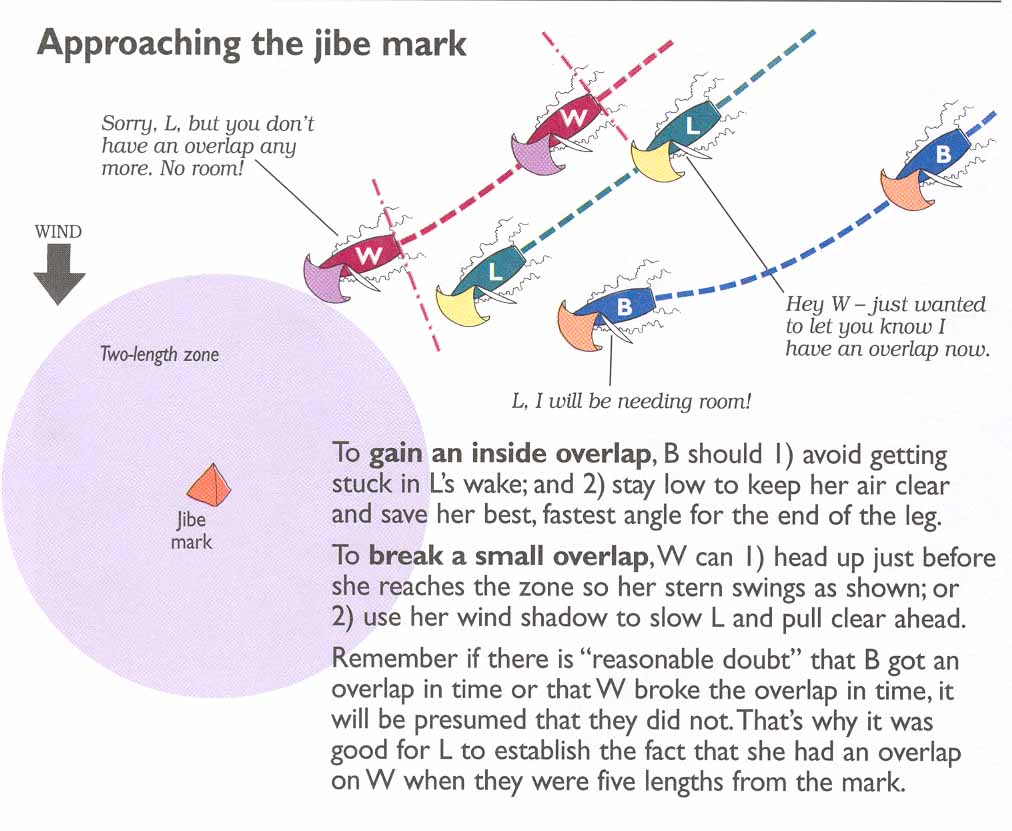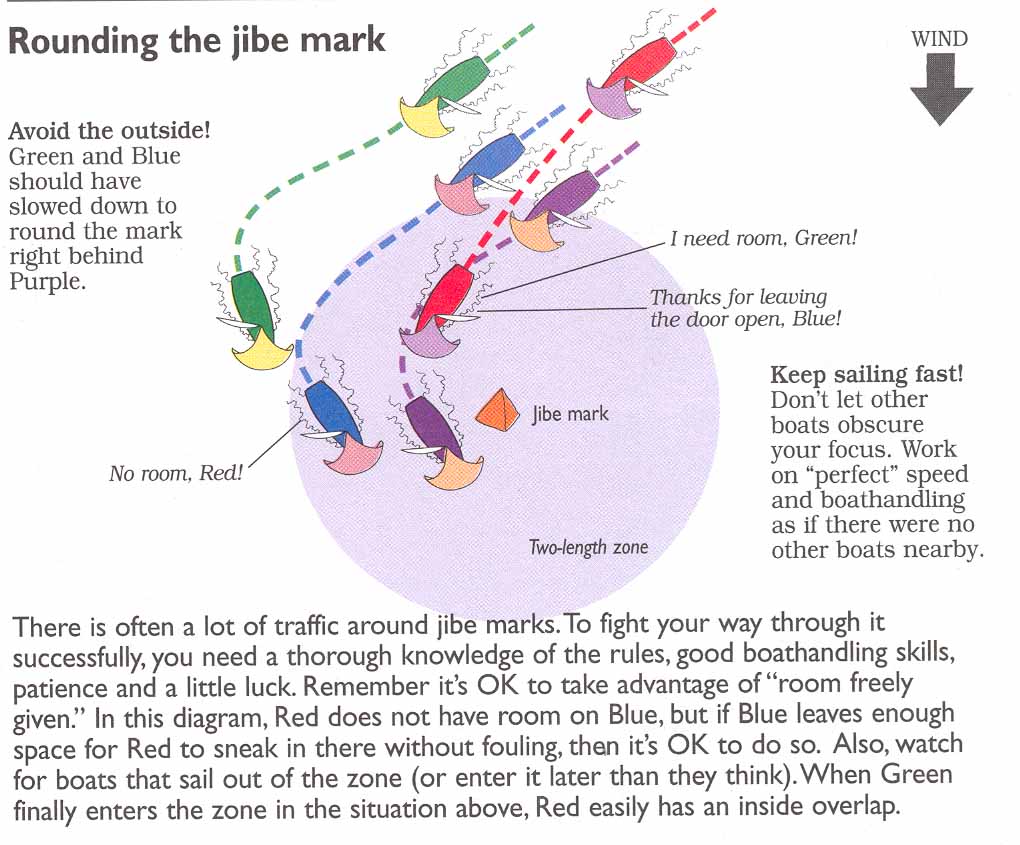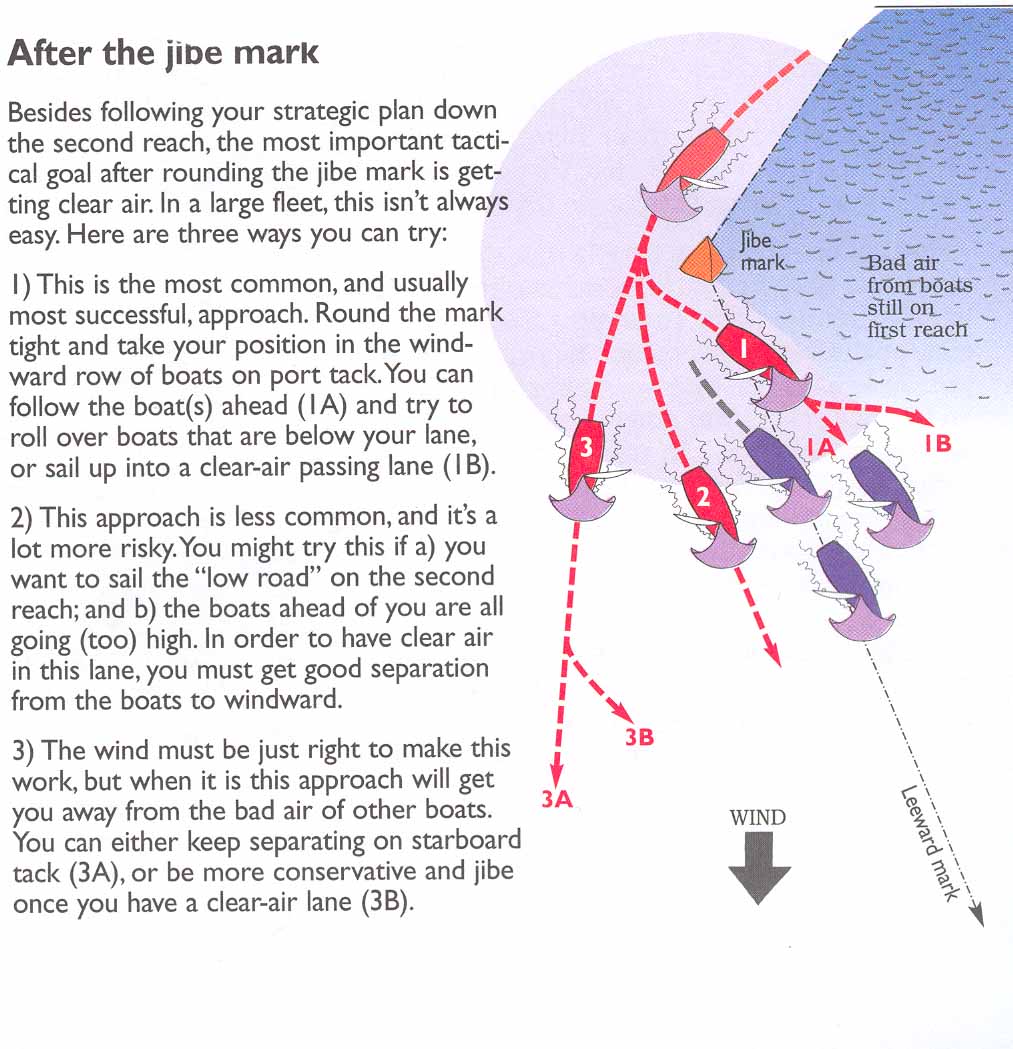
Stay in Control at the Jibe Marks
by David Dellenbaugh
Tactics are the boat-on-boat ďmovesĒ you make to stay in control of your race
and follow your strategy in the midst of a fleet of boats. Good tactics are
obviously important at the jibe mark since there are often a bunch of boats
fighting to get around it. If you arenít assertive, you will be pushed to the
outside and back of the pack.
The end of the first reach
As you approach the jibe mark, your main tactical goal is to set yourself up for
a good, clean mark rounding. This is important for maintaining speed and the
ability to follow your strategy as you begin the second reach.
Try to break or gain an inside overlap on the boats around you before you (or
they) reach the two-length zone. Once youíre inside the zone, make sure you
communicate clearly with the boats that a) you believe owe you room; and b) you
are not planning to give room. This can prevent a lot of confusion and trouble
at the mark.
 |
You almost always want to avoid rounding the jibe mark on the outside of another
boat. If someone gets an inside overlap on you, slow down and round on their
transom so you are right next to the mark. This is much better than getting
stuck outside of them, to leeward and in bad air, with boats rolling over you
from behind.
Unless you are racing without a spinnaker, be careful about fighting too hard
for an inside overlap. Itís easy to get over-focused on buoy room and lose track
of everything you need to do for a good strategic rounding. Itís usually faster
to round the mark just behind another boat and have a great spinnaker jibe than
it is to win the inside but have a terrible rounding.
Fighting traffic at the jibe mark
As you plunge into the jibe mark melee, your objectives should be the following:
1) To exit from the mark cleanly with clear air and speed; 2) To exit from the
mark rounding in a position where you can follow your strategy; and 3) To avoid
hitting the mark or breaking any right-of-way rules.
One thing to keep in mind at a crowded jibe mark is how much risk youíre willing
to take. With many boats so close together, itís easy to foul someone, and the
penalty for this is substantial since you must take an immediate 720 penalty.
This means dropping your spinnaker, getting clear of other boats, doing two
circles and then rehoisting your chute.
Imagine you are approaching a jibe mark with an inside overlap on another boat,
and you hail ďRoom!Ē The other boat, however, claims to be clear ahead and does
not intend to give you buoy room. Should you push your way around the mark
inside of them, risking contact and a protest, or slow down and round just
behind them?
 |
There is no right answer here, just choices to make based on your position in a
race or regatta. Unless I am desperately trying to catch boats, I almost always
take the latter, more conservative approach. This way I know I wonít be
protested (I assume the odds of losing a protest are 50-50), and I can still
protest the other boat if I want.
Beginning the second reach
After you make it around the jibe mark, you normally have two main tactical
goals. The first is to make sure you are clear to follow the strategic plan that
you devised for the second reach. If you want to sail low toward the leeward
mark, for example, donít round the mark and then try to pass to windward of a
boat thatís ahead of you.
Conversely, if you want to take the high road on the second reach, donít even
think about rounding the mark outside another boat. Slow down instead and round
the mark close enough so you can touch it. Make sure you jibe early so the pole
is in place on the mast and everyone is ready to hike when your bow gets to the
mark.
 |
No matter what strategy you choose, your second tactical goal is to be able to
sail fast after rounding the mark. Basically, this means you need to find clear
air right away. When youíre near a lot of boats on a reach, itís usually easier
to get clear air by going high than low (especially in light winds), so err on
the high side. Whatever you do, donít get tangled up with one other boat and
sail yourself out of the race.
Dave publishes the newsletter Speed & Smarts. For a subscription call:
800-356-2200 or go to
www.speedandsmarts.com